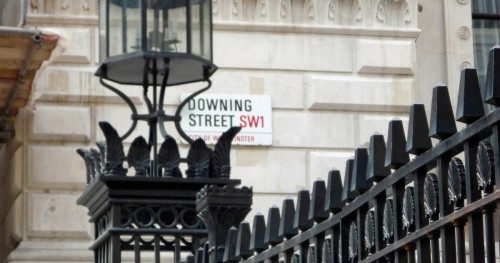
How to understand your tax when freelancing on the side
The cost of living crisis may mean that your finances as a 9-to-5 employee have already come under some strain or you may be worried that they will do so in the future.
Freelancing to the (financial) rescue?
One option to help with this is to try and increase your full-time income by doing a bit of freelancing on top of your usual work. Whether you are good at marketing, writing, tutoring, or translating -- there are plenty of ways to share your skills these days, particularly via online platforms.
But with extra income from your bolted-on self-employment comes tax considerations which can be easily overlooked, writes Meredith McCammond, technical officer at the Low Incomes Tax Reform Group.
Here, exclusively for FreelanceUK, I will outline how you can stay on the right side of HMRC by providing you with some key information and top tips for when you have a second income on top of your permanent employment.
Starting point
Most employees working in the UK pay all their tax through thePay As You Earn (PAYE) system, and are not required to submit a tax return. If you start freelancing on the side of a main job, you may need to complete a tax return as you will have a source of untaxed income, in addition to your employment income.
But hold on! To the extent that the freelancing is done on a sole trader basis, that is, on a self-employed basis, you may be able to use the trading allowance.
Can you use the trading allowance when freelancing on the side?
The allowance can be beneficial in some instances. In fact under the trading allowance, if your income from self-employment is no more than £1,000 in the tax year (before any expenses are deducted), then there is no tax to pay on it and nothing to report to HMRC. This means you will not need to register your self-employment with HMRC nor complete a tax return, unless you complete one for other reasons.
The trading allowance is available on top of the personal allowance which in 2022/23 is £12,570. There is no restriction to the amount of trading allowance you can get, e.g. if you only start freelancing in March 2022, then you can still get the full £1,000 amount – the amount isn’t restricted to 1/12.
Trading allowance: key point
When measuring the £1,000 limit, be aware that some expenses are deducted from your income before you get paid it.
This is especially important if you are using an online platform to freelance while you are full-time employed.For example, let’s say you receive a payment of £892.50 direct to your bank account from a freelancing website. However, the website charges 15% fees and they take this from the income before they pay you. So your gross trading income is actually £1,050 -- even though you only receive £892.50. In this case you would need to inform HMRC and complete a tax return (see below).
Practicalities when you need to register as self-employed
If your self-employment income is above £1,000 in the tax year then HMRC says you will need to register with HMRC to file a tax return. You need to do this by October 5th after the tax year in which your activity first started. So, if you start freelancing in September 2022, then you would need to register with HMRC for a 2022/23 tax return by October 5th 2023. That tax return would then be due with HMRC by January 31st 2024, assuming you are filing online.
In the tax return, you would declare your freelancing income and expenses, however you can elect to deduct the £1,000 trading allowance from the income instead of actual expenses. This can be very useful if you don’t have many actual expenses, which freelancers often don’t as you are essentially making money from your time rather than from buying stock to sell.
Employment income and freelance income: key point
If you have to complete a tax return, you must also include your employment income (and taxes paid through PAYE), and any other taxable income that you have -- not just the income that has caused you to complete the tax return. If you use HMRC online services to file, this will automatically calculate any tax and NIC you owe after deducting any tax you have paid through PAYE.
Actual expenses
Expenses can only have been incurred ‘wholly and exclusively’ for the purposes of your sole trader freelancing, to be allowable for tax purposes. The difference from being an employee is that the expenses do not have to be ‘necessarily’ incurred. So it can be easier to meet the test.
Doing similar work self-employed as you do when employed: key point
Where you have self-employment income and employment income arising in the same type of area -- for example, where you work in a theatre during the day and do some private stage production work in the evening, you must make sure that you only take relief for your self-employment expenses against your self-employment income (and vice versa).
You should also be careful not to apply the self-employment expenses rules to your employment expenses nor to take a double deduction for the same expense -- that is, to treat the same expense as having been incurred in both your employment income and self-employment income. That said, if you use something for both your employment and self-employment (and it is allowable for both), you might apportion it.
Business records
You need to keep good business records of your income and expenses – to prove you are below £1,000 if you are using the trading allowance rather than completing a tax return or to complete a tax return. These need to be kept for five years from the January 31st following the end of the tax year. So, if you complete a 2022/23 tax return- the filing deadline is January 31st 2024 and you should keep business records until January 31st 2029. There is more information from us on business record-keeping here.
Freelancers, remember -- without proper records you could end up paying the wrong amount of tax – either not enough, which could mean penalties -- or too much, which damages the profitability of your second income!
How much tax and National Insurance contributions (NIC) will I pay?
You only pay tax and NIC on your freelancing ‘profit’ – so if your freelancing income is £5,000 a year and you have £1,200 of business expenses, you would only pay tax and NIC on £3,800.
How much tax you will pay on the profit depends on what other income you have. For example, if you have employment in which you earn £7,000 but also have a self-employment profit of £3,800, you will pay 0% tax on it, as your total income does not exceed the personal allowance. But if you have an employment in which you earn £20,000 and £3,800 profit, you will pay 20% tax on the £3,800 profit, so £760, as all your personal allowance will be used against your employment income.
At present, only self-employed earners whose profits exceed £11,908 a year are required to pay Class 2 and Class 4 NIC. If your profits exceed this, you may need to pay Class 2 and 4 NIC - even if you already paying Class 1 NIC through your main employment. However there is an annual maximum of contributions that is due.
When should I complete a tax return? Key point from HMRC
If you have self-employment income, HMRC usually says it is necessary to complete a tax return even where your total level of income means that there is no tax or NIC due (unless your self-employment income is fully covered by the trading allowance).
What if I’m a high earner?
When it comes to tax rates, if you are a high earner, your freelance profit when added to your other income could be taxable at 40% or even 45%. If your total earnings reach certain levels, there may be less obvious knock-on effects to your tax position or those of family members. For example, if you reach, £50,000 you may have a High Income Child Benefit Charge issue. If you reach £50,270 (so that you are no longer a basic rate taxpayer) you may not be able to use the Marriage Allowance. Over £100,000, you start to lose the personal allowance. Luckily the VAT registration sales threshold of £85,000 is only based on your self-employment so unless you have very high freelancing income, you probably don’t need to worry about this too much!
Final thought
These complexities aren’t reasons not to do the freelance work! Rather, they are just things to be aware of, so you don’t get any nasty shocks from HMRC later down the line. For more help and information on all of the issues covered here, contact us, ask HMRC or speak to an accountant.



Comment
Log in or create your account to react to the article.